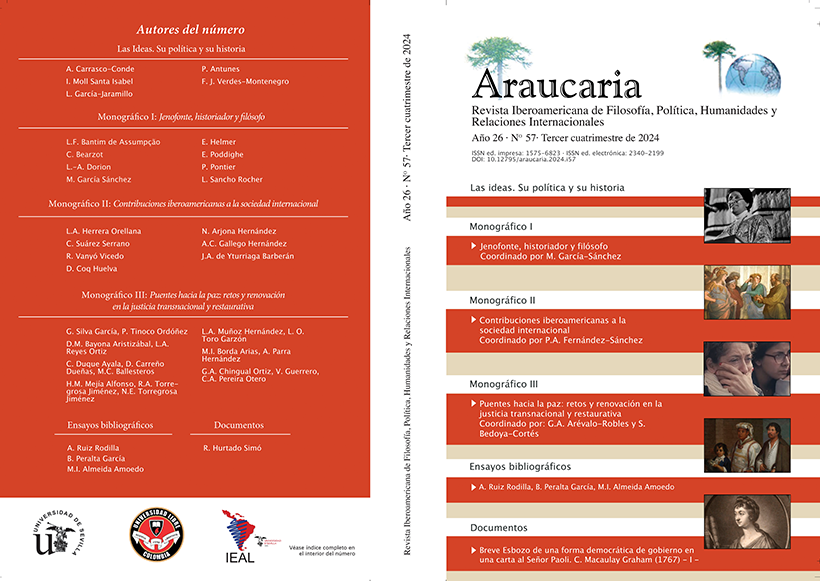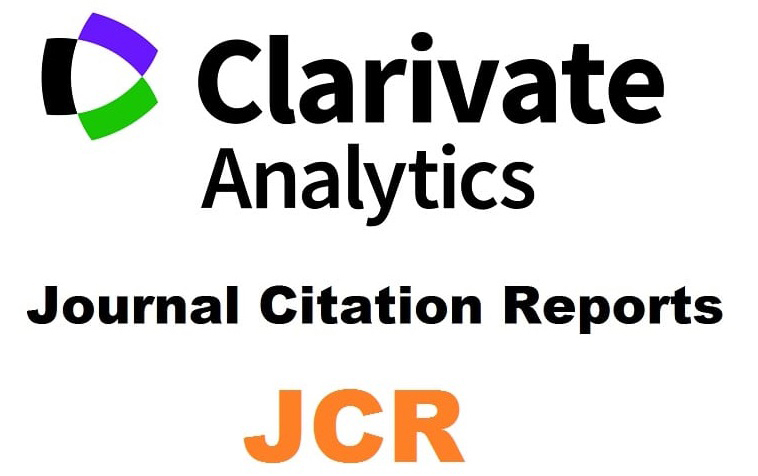Huizinga, tudo é “play” ou de como tudo, afinal, pode ser “falso-play”. Alguns problemas
Huizinga, everything is “play” or how everything, after all, can be “false-play”. A few problems
DOI:
https://doi.org/10.12795/araucaria.2024.i57.04Schlagworte:
Conflação; Cultura; Elitismo; Puerilidade; Seriedade.Abstract
O presente artigo vai considerar alguns problemas da obra de Huizinga, Homo Ludens, onde foi proposto o fator social “play” como constante e base da civilização humana, enfim, que “tudo é play”. A crítica terá em conta alguns dos principais argumentos aí apresentados, o que resulta na análise do que se considera ser uma confusão conceptual entre “play” e “game”, ou “ludicidade” e “jogo”; uma contradição entre os próprios termos do autor aquando de uma comparação entre um suposto “play” do passado e o que entende ser o do presente; e um engagement que se co-relaciona com os dois pontos anteriores. Com este trajeto, a hipótese huizingiana de um “falso-jogo” também deve ficar esclarecida.
Downloads
Literaturhinweise
Barata-Moura, J. (1998): Estudos de Filosofia Portuguesa, Lisboa, Editorial Caminho.
Burghardt, G. M. (2005): The Genesis of Animal Play. Testing the Limits, Cambridge, Massachusetts; London, England, A Bradford Book, The MIT Press.
Caillois, R. (1958): Les jeux et les hommes. Le masque et le vertige, Édition revue et augmentee, Paris, Gallimard, 1992. [epub]
Carlson, C. (2011): “The ‘Playing’ Field: Attitudes, Activities, and the Conflation of Play and Games”, Journal of the Philosophy of Sport, 38, pp. 74-87.
DaCosta, L. P. (2014): “Sport and Ideology”, in Torres, C. R. (ed.), The Bloomsbury Companion to the Philosophy of Sport, London etc., Bloombury, pp. 212-227.
Deulofeu, J. (2010): National Geographic – Teoria dos Jogos: Prisioneiros com dilemas e estratégias dominantes (edição especial), Lisboa, RBA Revistas Portugal, 2018.
Duflo, C. (1997): Jouer et philosopher, Paris, PUF.
Duncan, M. C. (1988): “Play Discourse and the Rhetorical Turn: A Semiological Analysis of Homo Ludens”, Play and Culture, 1, pp. 28-42.
Eberle, S. G. (2014): “The Elements of Play. Toward a Philosophy and a Definition of Play”, Journal of Play, 6 (2), pp. 214-233.
Eco, U. (1985): “Huizinga e il gioco”, in Eco, Sugli Specchi e altri saggi, III edizione. Tascabili Bompiani, 1990, pp. 283-300.
Feezell, R. (2010): “A Pluralist Conception of Play”, Journal of the Philosophy of Sport, 37, pp. 147-165.
Geyl, P. (1961): “Huizinga as Accuser of His Age” [Huizinga als aanklager van zijn tijd], History and Theory, 2 (3), 1963, pp. 231-262.
Guardini, R. (1919): “Liturgy: Playful and Serious” [Vom Geist der Liturgie], in Kuehn, H. R. (sel.), The Essential Guardini. An Anthology of the Writings of Romano Guardini, Chicago, Liturgy Training Publications, 1997, pp. 147-154.
Henricks, T. S. (1988): “Huizinga’s Legacy for Sports Studies”, Sociology of Sport Journal, 5, pp. 37-49.
_____. (2006): Play Reconsidered: Sociological Perspectives on Human Expression, Urbana, IL, University of Illinois Press.
_____. (2015): Play and the Human Condition, Urbana etc., University of Illinois Press.
Henriot, J. (1989): Sous couleur de jouer: la métaphore ludique, Paris, Corti.
Huang, Y.; Ryall, E. (2018): “On the relationship between philosophy and game-playing”, in Russell, W. et al. (eds.), The Philosophy of Play as Life, London/New York, Routledge, pp. 80-93.
Huizinga, J. (1919): The Waning of the Middle Ages. Study of the Forms of Life, Thought, and Art in France and the Netherlands in the Fourteenth and Fifteenth Centuries [Herfsttij der Middeleeuwen], transl. by F. Hopman, London, Penguin Books, 1990, reprinted.
_____. (1936): In the Shadow of To-morrow [A Diagnosis of the Spiritual Distempers of Our Time], transl. from the Dutch by Huizinga, New York, The Norton Library, 1964.
_____. (1938). Homo Ludens. Vom Ursprung der Kultur im Spiel, 23. Auflage, Hamburg, Rowohlt Taschenbuch Verlag, 2013.
_____. (1949): Homo Ludens. A Study of the Play-Element in Culture, [transl. by R. F. C. Hull,] London etc., Routledge & Kegan Paul, 1980, reprinted.
_____. (1950): Homo Ludens. Proeve Eener Bepaling Van Het Spel-element Der Cultuur, Amsterdam, Amsterdam University Press, 2008.
_____. (2003): Homo Ludens. Um estudo sobre o elemento lúdico na cultura, trad. de V. Antunes, Lisboa, Edições 70.
Hurka, T. (2019): “Suits on Games: Slightly Revised, Slightly Restricted”, in Hurka (ed.), Games, Sports, and Play: Philosophical Essays, Oxford, Oxford University Press, pp. 13-32.
Kant, I. (1784): “Beantwortung der Frage: was ist Aufklärung? ”, in Immanuel Kant’s Sämmtliche Werke. In Chronologischer Reihenfolge, vol. 3, Leipzig, Leopold Voss, 1867, pp. 159-168.
Ketchum, A. L. (2018): “Playing in the Web. New Babylon and the Internet”, in Russell, W. et al. (eds.), The Philosophy of Play as Life, London/New York, Routledge, 2018, pp. 50-64.
Malaby, T. M. (2007): “Beyond Play. A New Approach to Games”, Games and Culture, 2, (2), April, pp. 95-113.
Michels, R. (1911): Political Parties. A Sociological Study of the Oligarchical Tendencies of Modern Democracy. Transl. by Eden & Cedar Paul, New York, Hearst’s International Library Co., 1915.
Nagel, M. (1998): “Play in culture and the jargon of primordiality: A critique of Homo Ludens”, in Duncan, M. C. et al. (eds.), Play and culture studies, vol.1, Greenwich, Greenwood Publishing Group, pp. 19-29.
Nguyen, C. T. (2017): “Philosophy of games”. Philosophy Compass, 12 (8), e12426 [18 pp].
Nieuwenhuys, C. (1969): Opstand van de Homo Ludens. Een Bundel Voordrachten En Artikelen, Bussum, Paul Brand.
Pederson, C. C. (2021): Gaming Utopia. Ludic Worlds in Art, Design, and Media, Bloomington, Indiana, Indiana University Press.
Schnyder, P.; Strouhal, E. (2010): “‘Die probabilistische Revolution hat am Spieltisch begonnen’. Ein Gespräch”, in Schädler, U.; Strouhal, E. (eds.), Spiel und Bürgerlichkeit. Passagen des Spiels I, Springer, pp. 167-182.
Simmel, G. (1917): “'Die Geselligkeit (Beispiel der reinen oder formalen Soziologie)”, in Grundfragen der Soziologie (Individuum und Gesellschaft), Sammlung Göschen, Bd. 1101. 3, unveränderte Aufl., Berlin, Walter de Gruyter & Co., 1970, pp. 48-68.
Skweres, A. (2017): Homo Ludens as a Comic Character in Selected American Films, Cham, Switzerland, Springer International Publishing.
Steiner, G. (2003): “Prefácio”, in Huizinga, Homo Ludens. Um estudo sobre o elemento lúdico na cultura, trad. de V. Antunes, Lisboa, Edições 70, pp. 7-14.
Suits, B. (1978): The Grasshopper: Games, Life and Utopia, Canada, Broadview Press, 2005.
_____. (2017): A Cigarra Filosófica. A Vida é um Jogo?, trad. de V. Guerreiro, Lisboa, Gradiva.
Sutton-Smith, B. (1997): The Ambiguity of Play, Cambridge, Massachusetts; London, England, Harvard University Press, 2001, 2nd printing.
Tekinbas, K. S.; Zimmerman, E. (2004): Rules of Play. Game Design Fundamentals, London, England; Cambridge, Massachusetts, The MIT Press.
Downloads
Veröffentlicht
Zitationsvorschlag
Ausgabe
Rubrik
Lizenz
Las ediciones impresa y electrónica de esta Revista son editadas por el Secretariado de Publicaciones de la Universidad de Sevilla, siendo necesario citar la procedencia en cualquier reproducción parcial o total.Salvo indicación contraria, todos los contenidos de la edición electrónica se distribuyen bajo una licencia de uso y distribución “Creative Commons Atribución-NoComercial-SinDerivar 4.0 Internacional”








